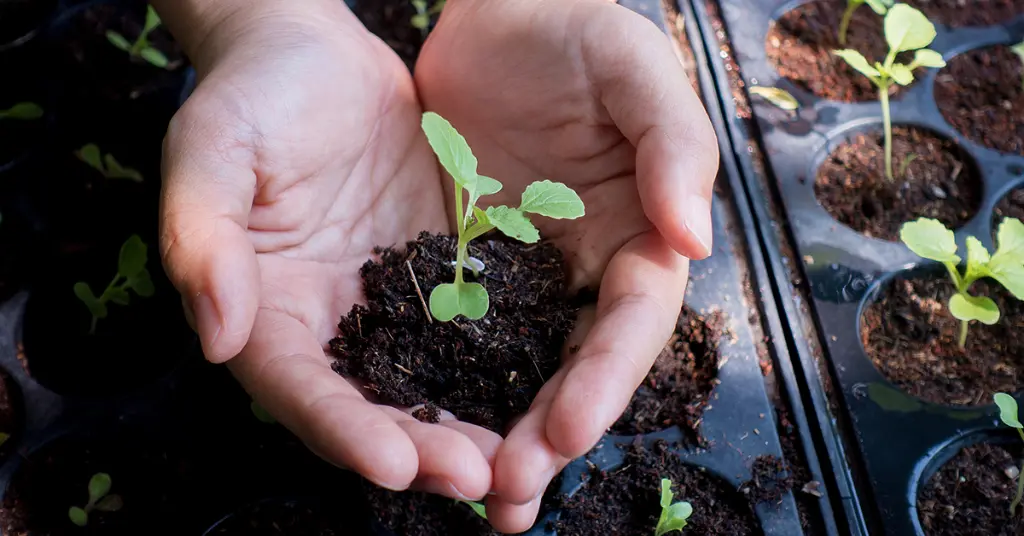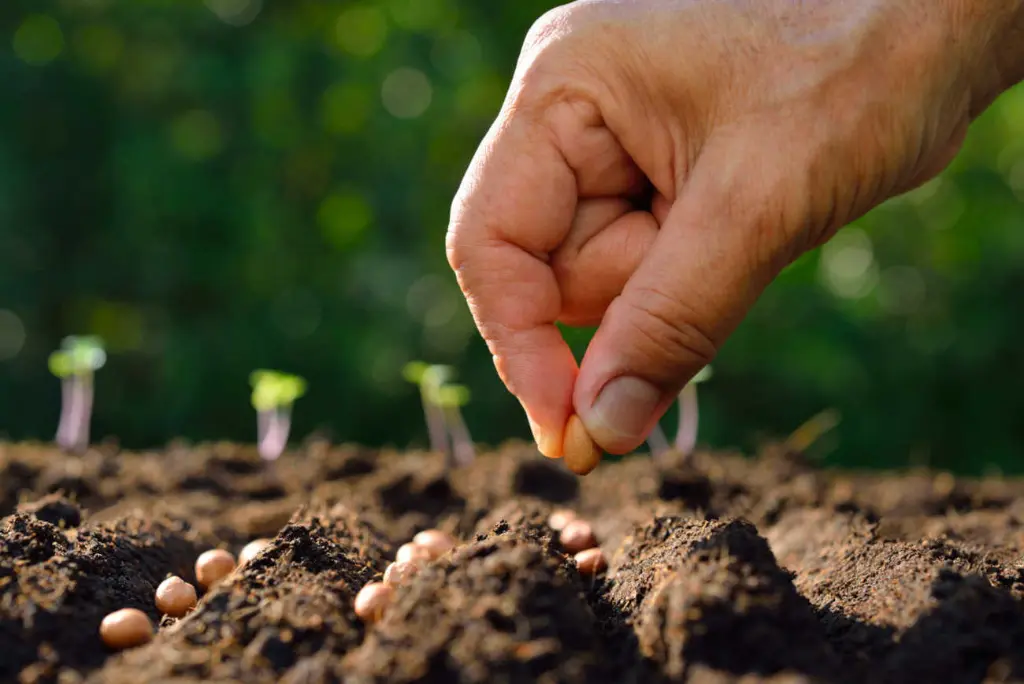
Gardening is both a science and an art, requiring careful planning and timing to ensure the best possible yield. A sowing calendar is an invaluable tool for gardeners, helping them determine the optimal times to plant various crops.
In this comprehensive guide, we’ll explore what a sowing calendar is, how to use it effectively, and provide detailed examples for different regions and crop types. Whether you’re a novice gardener or a seasoned pro, this guide will enhance your planting strategy and boost your garden’s productivity.

What is a Sowing Calendar?
A sowing calendar is a schedule that indicates the best times to plant seeds, either indoors or directly in the ground, based on climatic conditions. These calendars take into account factors such as:
- Frost dates
- Soil temperature
- Day length
- Crop type
Using a sowing calendar helps gardeners avoid planting too early or too late, ensuring that plants grow in optimal conditions for maximum yield.
Why Use a Sowing Calendar?
Efficiency: Proper timing leads to healthier plants and better harvests.
Cost-effective: Reduces the need for reseeding or replacing plants that fail to thrive.
Optimal Use of Space: Staggering planting times can allow for multiple harvests within a single season.
Pest and Disease Management: Planting at the right time can help avoid peak periods of pest and disease activity.
How to Read a Sowing Calendar
A sowing calendar typically includes:
- Planting dates: When to start seeds indoors, when to transplant, and when to direct sow.
- Frost dates: Average dates of the last spring frost and first fall frost.
- Soil temperature: Minimum temperature required for seed germination.
- Planting depth: How deep to plant the seeds.
- Spacing: Distance between plants.
Example Sowing Calendar
Here’s an example of a sowing calendar for a temperate climate (e.g., USDA Zone 6):
| Crop | Start Indoors | Transplant Outdoors | Direct Sow | Germination Temp (°C) | Planting Depth (cm) | Spacing (cm) |
|---|---|---|---|---|---|---|
| Tomatoes | Feb 20 – Mar 10 | Apr 15 – May 5 | – | 18-25 | 0.5 | 45-60 |
| Carrots | – | – | Mar 15 – Apr 15 | 10-15 | 0.5 | 5-7 |
| Lettuce | Feb 20 – Mar 10 | Apr 1 – Apr 15 | Mar 1 – Apr 15 | 10-18 | 0.5 | 20-25 |
| Cucumbers | Apr 1 – Apr 15 | May 15 – Jun 1 | May 1 – Jun 15 | 20-30 | 2.5 | 30-50 |
| Peppers | Feb 1 – Feb 20 | Apr 20 – May 15 | – | 20-30 | 0.5 | 45-60 |
Creating Your Own Sowing Calendar
Step 1: Determine Your Frost Dates
The first step in creating a sowing calendar is identifying the average last frost date in spring and the first frost date in fall for your region. This information can typically be found through local agricultural extensions or online resources such as the USDA Plant Hardiness Zone Map.
Step 2: Select Your Crops
Decide which vegetables, herbs, and flowers you want to grow. Consider your climate, soil type, and the space available in your garden.
Step 3: Research Optimal Planting Times
Look up the recommended planting times for each crop based on your frost dates. This information is often available on seed packets, gardening books, and reputable gardening websites.
Step 4: Create a Schedule
Using a calendar, mark the dates for starting seeds indoors, transplanting, and direct sowing for each crop. Include additional notes on soil temperature requirements, planting depths, and spacing.
Factors Affecting Sowing Times
Frost Dates
The risk of frost can significantly impact plant growth. Tender plants, like tomatoes and peppers, cannot tolerate frost and must be planted after the last frost date. Conversely, some cold-tolerant crops, like spinach and peas, can be planted before the last frost.
Soil Temperature
Different seeds require different soil temperatures to germinate. For example:
- Peas: 4-24°C
- Corn: 16-35°C
- Cucumbers: 20-30°C
Day Length
Day length influences the growth cycle of plants. Some plants, like lettuce, can bolt (go to seed) if exposed to long days, while others, like onions, require long days to form bulbs.
Regional Sowing Calendars
Different regions have varying climates, which affects the optimal sowing times. Here are examples for three different climates:
Mediterranean Climate (e.g., California)
| Crop | Start Indoors | Transplant Outdoors | Direct Sow | Germination Temp (°C) | Planting Depth (cm) | Spacing (cm) |
|---|---|---|---|---|---|---|
| Tomatoes | Jan 15 – Feb 10 | Mar 15 – Apr 15 | – | 18-25 | 0.5 | 45-60 |
| Carrots | – | – | Jan 1 – Mar 15 | 10-15 | 0.5 | 5-7 |
| Lettuce | Jan 1 – Feb 1 | Feb 15 – Mar 15 | Jan 1 – Mar 1 | 10-18 | 0.5 | 20-25 |
| Cucumbers | Feb 15 – Mar 15 | Apr 15 – May 15 | Mar 15 – May 1 | 20-30 | 2.5 | 30-50 |
| Peppers | Jan 1 – Jan 20 | Mar 15 – Apr 15 | – | 20-30 | 0.5 | 45-60 |
Tropical Climate (e.g., Florida)
| Crop | Start Indoors | Transplant Outdoors | Direct Sow | Germination Temp (°C) | Planting Depth (cm) | Spacing (cm) |
|---|---|---|---|---|---|---|
| Tomatoes | Nov 15 – Dec 10 | Jan 1 – Jan 15 | – | 18-25 | 0.5 | 45-60 |
| Carrots | – | – | Oct 1 – Dec 15 | 10-15 | 0.5 | 5-7 |
| Lettuce | Nov 1 – Nov 30 | Dec 15 – Jan 15 | Oct 1 – Dec 1 | 10-18 | 0.5 | 20-25 |
| Cucumbers | Dec 15 – Jan 15 | Feb 15 – Mar 15 | Jan 15 – Feb 15 | 20-30 | 2.5 | 30-50 |
| Peppers | Nov 1 – Nov 20 | Jan 1 – Feb 1 | – | 20-30 | 0.5 | 45-60 |
Continental Climate (e.g., Midwest USA)
| Crop | Start Indoors | Transplant Outdoors | Direct Sow | Germination Temp (°C) | Planting Depth (cm) | Spacing (cm) |
|---|---|---|---|---|---|---|
| Tomatoes | Feb 20 – Mar 10 | Apr 15 – May 5 | – | 18-25 | 0.5 | 45-60 |
| Carrots | – | – | Mar 15 – Apr 15 | 10-15 | 0.5 | 5-7 |
| Lettuce | Feb 20 – Mar 10 | Apr 1 – Apr 15 | Mar 1 – Apr 15 | 10-18 | 0.5 | 20-25 |
| Cucumbers | Apr 1 – Apr 15 | May 15 – Jun 1 | May 1 – Jun 15 | 20-30 | 2.5 | 30-50 |
| Peppers | Feb 1 – Feb 20 | Apr 20 – May 15 | – | 20-30 | 0.5 | 45-60 |
Using Technology to Aid Sowing
Gardening Apps: There are various apps available that provide personalized sowing calendars based on your location and preferences.
Online Tools: Websites like the Old Farmer’s Almanac offer interactive planting calendars.
Smart Devices: Tools like soil thermometers and moisture sensors can provide real-time data to help you decide when to plant.
Common Mistakes to Avoid
- Ignoring Frost Dates: Planting too early can result in frost damage.
- Overcrowding: Not following spacing recommendations can lead to poor plant health.
- Inconsistent Watering: Different crops have different water needs.
- Neglecting Soil Preparation: Healthy soil is crucial for plant growth.

A sowing calendar is an essential tool for any gardener, helping to maximize yield and ensure healthy plant growth. By understanding the principles behind sowing calendars and using them effectively, you can transform your gardening experience. Whether you’re in a temperate, Mediterranean, tropical, or continental climate, a well-planned sowing calendar can make all the difference.
Embrace the science of gardening with a well-crafted sowing calendar and watch your garden flourish season after season. Happy gardening!



